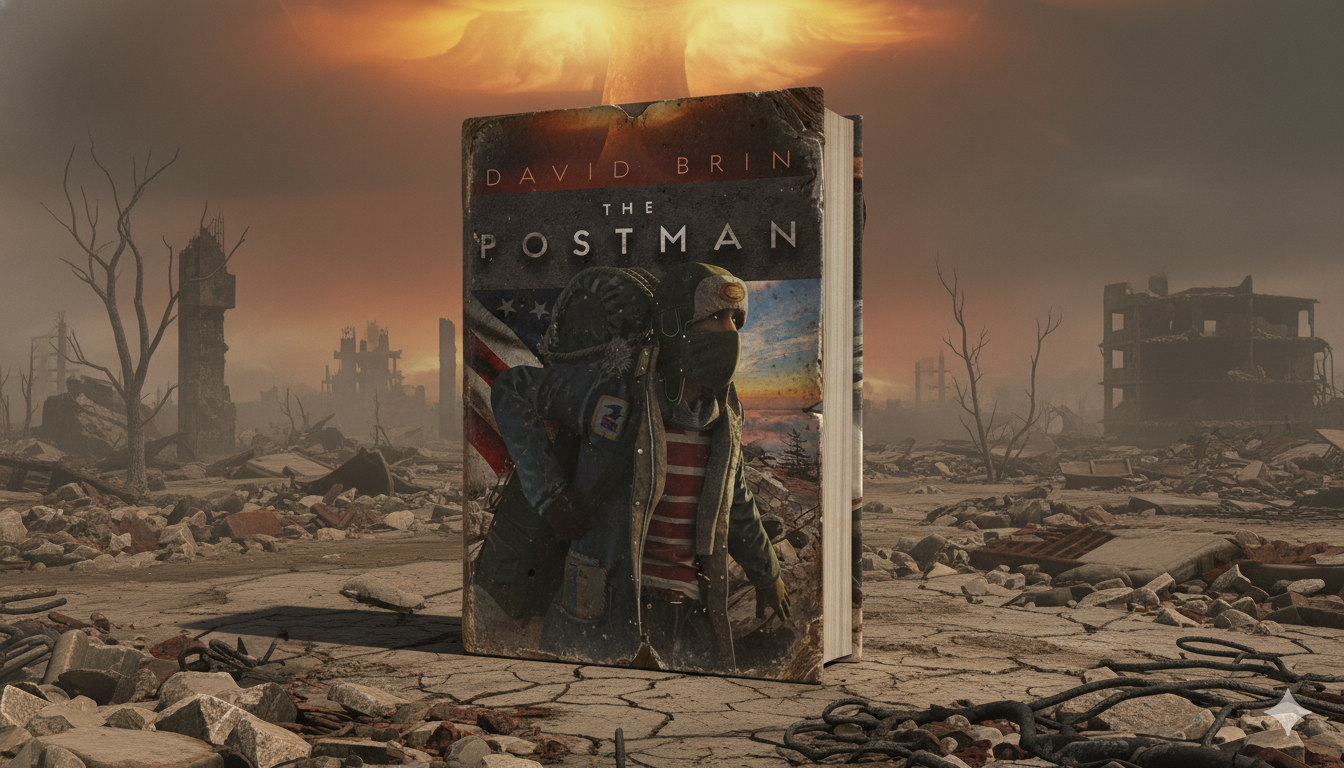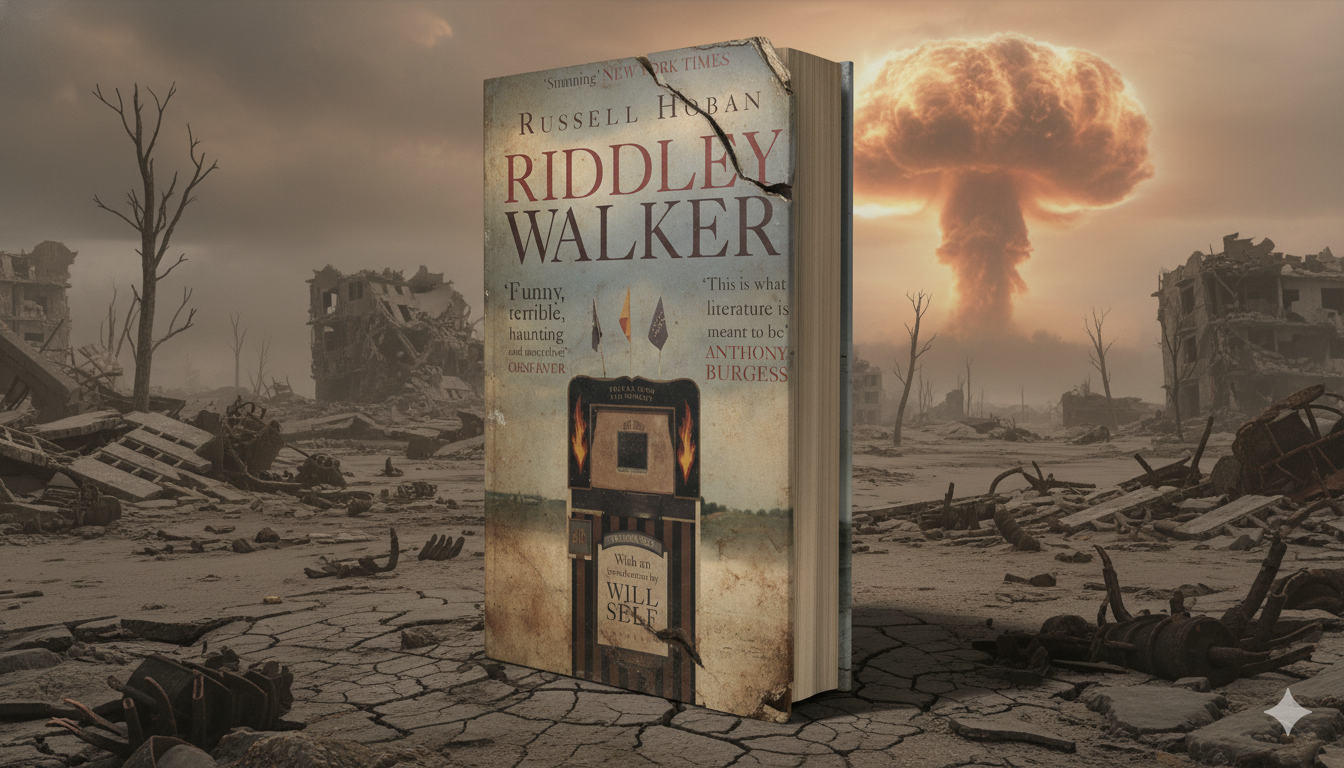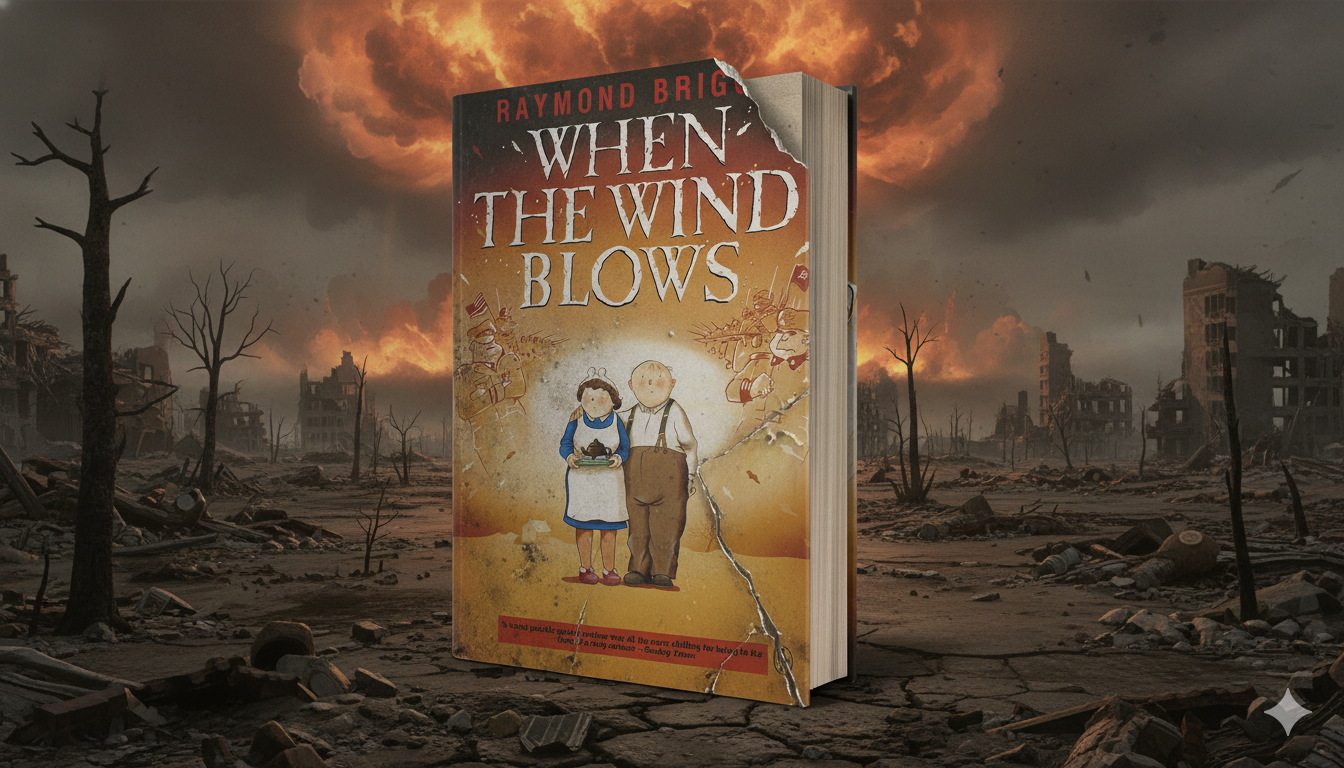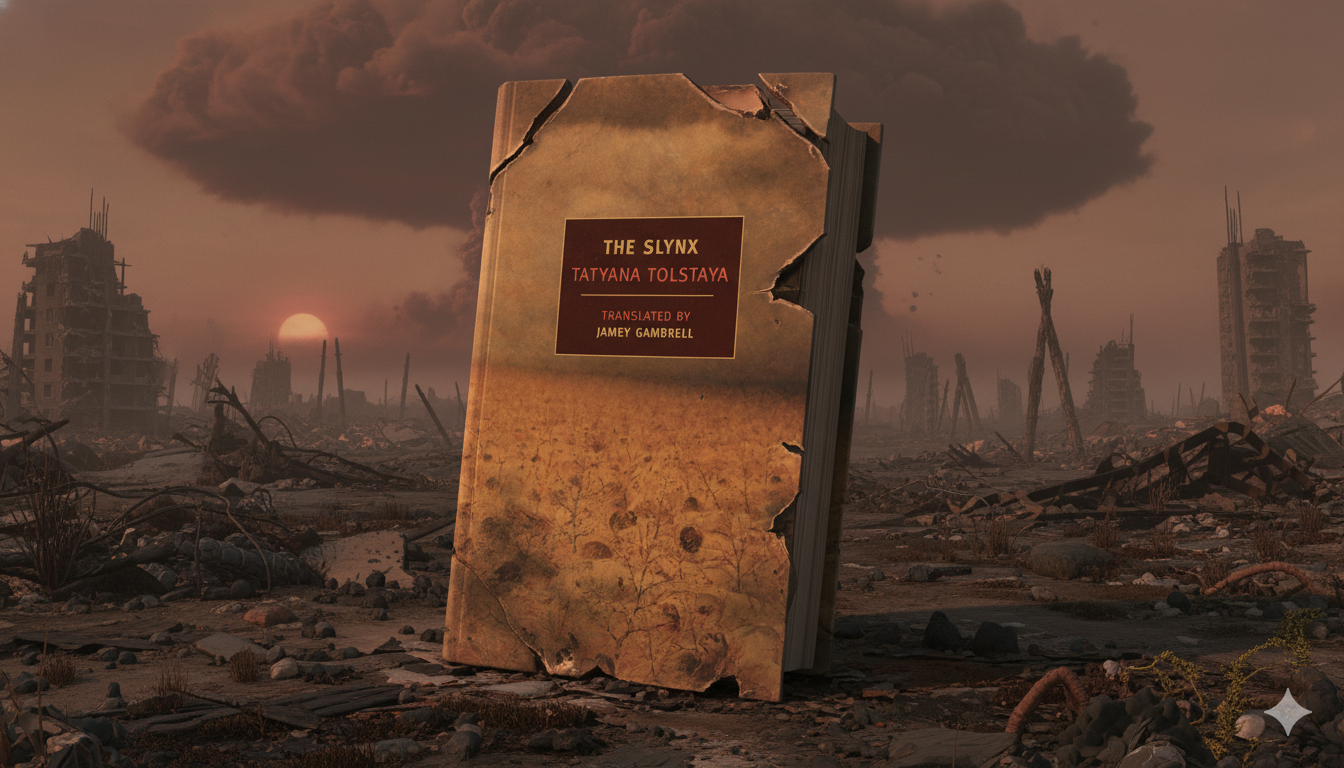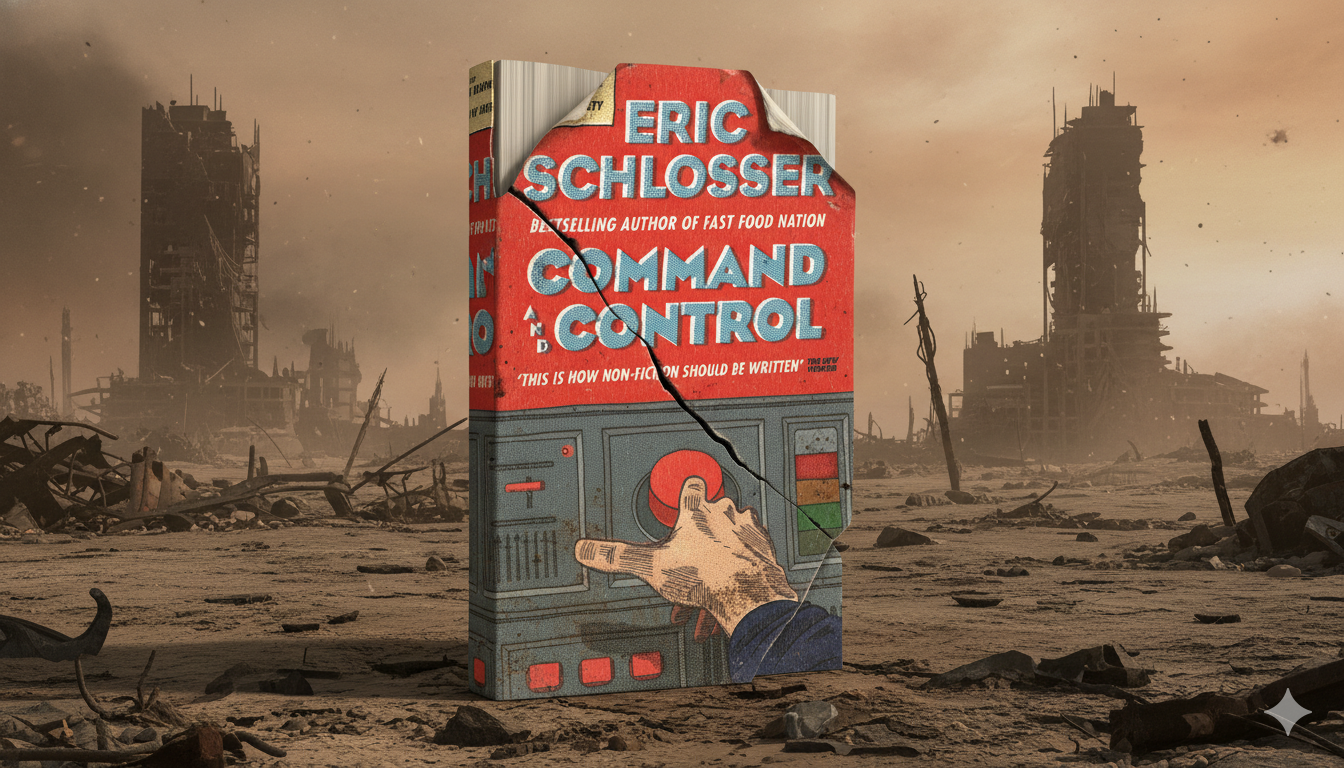The 19 Best Books About Nuclear War
Best Post Apocalyptic Books → The 19 Best Post Books About Nuclear War
I'm fascinated by nuclear war, and after reading dozens of books about nuclear Armageddon, I've compiled my essential reading list.
This list is organized by time period, from the Atomic Age, through the Cold War era, and into the modern day. I've also included my essential non-fiction reading to round out the list.
I own and have read all of the books in this reading list. I will update and revise this list over time.
The Atomic Age (1945-60)
The first generation of nuclear-war literature emerged in the immediate aftermath of Hiroshima and Nagasaki.
Writers grappled with the unprecedented power of the bomb, the moral shock of mass destruction, and the dawning realization that humanity could end itself at the push of a button.
Fiction from this period often imagines total annihilation or slow ecological death, reflecting early fears of fallout, rapid escalation, and the fragility of civilization in the shadow of superweapons.
1. On the Beach by Nevil Shute (1957)
Synopsis: A global nuclear war has wiped out the Northern Hemisphere, leaving the people of Melbourne awaiting the slow arrival of deadly fallout. The novel follows a small group of ordinary men and women as they confront the certainty of extinction, navigating love, duty, and quiet resignation in a world with no future.
Why I chose it: It is one of the earliest and most influential post-nuclear novels, written in 1957 when fears of thermonuclear escalation were acute. Its understated tone, focus on everyday life, and unflinching depiction of global annihilation helped shape public understanding of nuclear war’s human consequences and made it a touchstone of the Atomic Age.
My favourite quote: “It’s not the end of the world at all. It’s only the end for us.”
2. A Canticle for Leibowitz by Walter M. Miller Jr. (1959)
Synopsis: Centuries after a nuclear war has plunged humanity into a new Dark Age, the monks of the Albertian Order of Leibowitz labor to preserve the remnants of scientific knowledge. Across three linked eras, the novel follows their efforts as civilization slowly rebuilds, repeats old mistakes, and ultimately confronts the same destructive forces that ended the world before.
Why I chose it: It's one of the few true science fiction, written in 1959 when Cold War fears were acute and the future of technological civilization felt precarious. Its vision of old-world technology surviving Armageddon—and being revered as miraculous artifacts by the societies that follow—directly inspired my own novel, The Green Priest. The book’s blend of post-apocalyptic world-building, satire, and cyclical history makes it one of my favorites.
My favourite quote: “Listen to me, boy! Bury your pride with your dead. You’ll have no use for it on the other side.”
3. Alas, Babylon by Pat Frank (1959)
Synopsis: When a sudden nuclear exchange devastates the United States, the small Florida town of Fort Repose is cut off from the outside world. Randy Bragg and his neighbors must learn to survive without electricity, medicine, fuel, or modern infrastructure. The novel follows their struggle to rebuild a functioning community in the aftermath of national collapse, focusing on practical survival, cooperation, and resilience.
Why I chose it: A landmark of mid-century science fiction, Alas, Babylon (1959) is one of the earliest realistic depictions of nuclear war’s impact on ordinary American life. Written at the height of Cold War dread, it grounded the genre in everyday survival rather than grand geopolitics, influencing many later post-nuclear narratives. Its clear-eyed portrayal of societal breakdown and communal recovery makes it a foundational work in the literature of nuclear catastrophe.
My favourite quote: “Nothing was ever the same after the day of the bombs.”
The Cold War Era (1970s-1980s)
By the 1970s and ’80s, nuclear anxiety had become embedded in everyday life. This era saw hardened geopolitical tensions, proliferating arsenals, and public debates over deterrence and civil defense. Literature shifted toward more complex portrayals of societal collapse, survivalism, and authoritarianism, often combining realism with allegory or dark fantasy. These works reflect a world accustomed to living on the edge of catastrophe.
4. The Postman by David Brin (1985)
Synopsis: After a series of wars and societal collapse, a wandering survivor in the Pacific Northwest discovers an old postal uniform and begins delivering long-abandoned letters. What starts as a small deception becomes a powerful symbol: communities, believing the United States has been reborn, begin to hope again. As he travels from settlement to settlement, the “Postman” unintentionally reignites the idea of shared civic identity in a fractured, violent landscape.
Why I chose it: A key Cold War–era work of science fiction, The Postman (1985) blends post-apocalyptic adventure with an exploration of how stories, symbols, and institutions hold societies together. It was also the first post-apocalyptic novel I ever read, loaned to me as a dog-eared copy by a friend, and it changed my reading trajectory permanently. Its focus on rebuilding—not just surviving—makes it an essential entry in the genre.
My favourite quote: “Every civilization depends on the quality of the stories it tells itself.”
5. Riddley Walker by Russell Hoban (1980)
Synopsis: Set nearly two millennia after a nuclear holocaust, the novel follows twelve-year-old Riddley Walker as he wanders a devastated, primitive England. Language has devolved into a broken, phonetic dialect, and the remnants of lost technologies survive only as fragments of myth. As Riddley uncovers distorted memories of the old world, he becomes entangled in a dangerous effort to rediscover the power that destroyed civilization in the first place.
Why I chose it: A landmark work of science fiction from 1980, it is renowned for its inventive language, archaeological storytelling, and haunting reconstruction of a culture living amid the radioactive bones of its past. It has been celebrated by many writers—most notably Margaret Atwood, who has called it her favourite post-apocalyptic novel—both for its linguistic daring and for its exploration of how societies reinterpret old technologies as sacred lore.
My favourite quote: “On my naming day when I come 12 I gone front spear and kilt a wyld boar…”
6. When the Wind Blows by Raymond Briggs (1982)
Synopsis: This graphic novel follows Jim and Hilda Bloggs, an elderly British couple who faithfully follow government civil-defense pamphlets as a nuclear war breaks out. Treating the coming attack much like the Blitz, they construct a makeshift shelter and wait for normal life to resume. In the days that follow, their quiet routines give way to the slow, heartbreaking onset of radiation sickness.
Why I chose it: A 1982 work of science fiction rendered as a deceptively gentle graphic novel, it delivers a stark anti-nuclear message through domestic innocence and visual simplicity. It is especially striking coming from Raymond Briggs, best known for The Snowman. By contrasting familiar, comforting illustration with the horrors of fallout, the book exposes the futility of civil-defense optimism and stands as one of the most affecting Cold War–era portrayals of nuclear catastrophe.
My favourite quote: “Well, you can’t expect things to be normal after the bomb.”
Modern Era (1990s-Present)
After the Cold War, nuclear fear did not vanish but evolved. Contemporary works use post-nuclear settings to explore existential dread, environmental ruin, fractured identities, and the long tail of technological hubris. The focus often turns inward—toward individual consciousness, memory, and moral perseverance—rather than geopolitical rivalry. The genre becomes less about the bomb itself and more about what remains after history’s rupture.
7. The Road by Cormac McCarthy (2006)
Synopsis: The story is straightforward: a father and his young son traverse a bleak, ash-covered landscape years after an unspecified cataclysm (strongly implied to be nuclear). All plant and animal life is gone; the sun is obscured by gray clouds. As the pair pushes southward on ruined highways, they scavenge for food and evade bands of cannibals, intent on reaching the coast, and whatever lies beyond.
Why I chose it: This is my favourite novel of all time, by any author, in any genre. (And I'm not alone in this obsession: The Road won the 2007 Pulitzer Prize for Fiction.) It's a short read, but McCarthy's writing is breathtaking, with every word chosen perfectly. His writing veers between vivid descriptions of monstrous acts and impossible beauty. And despite being often characterized as "the bleakest story ever told", I find the novel's ending to be genuinely uplifting. (But your mileage might vary.)
My favorite quote: “No lists of things to be done. The day providential to itself. The hour. There is no later. This is later. All things of grace and beauty such that one holds them to one's heart have a common provenance in pain. Their birth in grief and ashes.”
8. Metro 2033 by Dmitry Glukhovsky (2002)
Synopsis: Set in the ruins of post-nuclear Moscow, the novel follows Artyom, a young man raised in the underground Metro system where the last survivors of World War III live in isolated, often hostile station-communities. With the surface irradiated and stalked by mutated creatures, Artyom must cross the labyrinthine tunnels to warn others of an encroaching threat, encountering fanatics, factions, and the fractured remnants of human belief along the way.
Why I chose it: A major work of post–Cold War science fiction, Metro 2033 (2002/2005) offers a distinctly Russian vision of nuclear aftermath—steeped in Soviet memory, urban decay, and philosophical darkness. Its focus on underground survival, ideological microstates, and the lingering psychic fallout of nuclear war gives it a unique place in the genre. The novel also became a cultural phenomenon, spawning sequels and widely acclaimed video games that expanded its world and influence.
My favourite quote: “Lord, what a splendid world we ruined…”
9. The Slynx by Tatyana Tolstaya (2000)
Synopsis: Two centuries after a catastrophic “Blast,” the remnants of Moscow have devolved into a primitive settlement where people hunt mice for food, bear strange mutations called “Consequences,” and revere scraps of old-world culture without understanding them. Benedikt, a lowly scribe, copies government proclamations for a tyrannical ruler while slowly discovering forbidden traces of the civilization that once existed. His growing literacy becomes both liberation and danger in a world warped by fear, ignorance, and myth.
Why I chose it: Unlike many post-apocalyptic novels, The Slynx (2000) feels unmistakably literary—rich, sly, strange, and linguistically alive. I’m drawn to it because it brings real artistic ambition to a genre that can sometimes feel thin or formulaic. Tolstaya’s blend of grotesque humor, cultural satire, and broken folklore shows what the genre can become in the hands of a writer with sharper instincts: not just ruined cities and scavenged food, but a full, unsettling portrait of how language, belief, and power survive catastrophe.
My favourite quote: “The world may perish, but the meat grinder is indestructible.”
Non-fiction books
Non-fiction across decades documents the realities behind nuclear policy, the human cost of atomic warfare, and the structural flaws in command-and-control systems. These works bridge history and current risk, revealing how close the world has come to accidental catastrophe and how fragile nuclear stability remains.
10. Nuclear War: A Scenario by Annie Jacobsen (2024)
Synopsis: This nonfiction account presents a minute-by-minute unfolding of a modern nuclear war, beginning with a single missile launch and rapidly escalating into a global thermonuclear exchange. Drawing on expert interviews, declassified plans, and historical near-misses, Jacobsen constructs a tightly wound narrative that shows how misunderstandings, automated systems, and geopolitical reflexes can lead to the destruction of nations in under an hour.
Why I chose it: Because it offers the most detailed, most well-researched account of precisely what happens in the build-up to a nuclear strike. And yet it reads with the momentum of a thriller despite being entirely grounded in real-world policy and history. I found it so gripping that I finished it in one sitting—an almost unbelievable experience for a nonfiction book about nuclear command structures. It captures the sheer fragility of the systems meant to prevent catastrophe, making the abstract threat of nuclear war feel immediate, urgent, and horrifyingly plausible.
My favourite quote: “Civilization can end in minutes.”
11. Command and Control by Eric Schlosser (2013)
Synopsis: This investigative nonfiction work traces the history of America’s nuclear weapons complex through a series of accidents, near-misses, and systemic failures. Anchored by the 1980 Damascus, Arkansas Titan II explosion—caused by something as mundane as a dropped socket—it reveals how fragile the command-and-control system has always been. Schlosser builds a detailed, often harrowing picture of how close the United States has come to unintended nuclear detonations.
Why I chose it: Because it strips away the comforting illusion that these weapons are safely managed. Schlosser shows, case by case, how human error, aging infrastructure, and bureaucratic blind spots put the world at risk more often than most people realize. It’s a rigorous, gripping account that makes nuclear history feel immediate rather than distant—and it permanently reshapes how you think about the systems built to protect us.
My favourite quote: “The fallibility of human beings guarantees that no technological system will ever be infallible.”
12. Hiroshima by John Hersey (1946)
Synopsis: Originally published as a long New Yorker article in 1946, Hiroshima follows six ordinary people who survived the atomic bombing of Hiroshima on August 6, 1945. Hersey traces their experiences from the instant of the blast through the days and months that followed—burns, radiation sickness, destroyed homes, and the disorienting struggle to understand what had happened. Told with quiet, unadorned clarity, it remains one of the most humane and devastating accounts of nuclear warfare ever written.
Why I chose it: Because it is the foundational human document of the nuclear age. Hersey cut through abstraction and geopolitics by focusing on lived experience—on bodies, suffering, bewilderment, and endurance. The book’s calm, reportorial style makes the horror impossible to ignore. It changed public understanding of the atomic bomb when it was first published, and it still stands as the most essential testimony to what nuclear weapons actually do to human beings.
My favourite quote: “A hundred thousand people were killed by the atomic bomb, and these six were among the survivors.”
My runners-up
These are my favourite books about nuclear wart that didn't quite make the essential reading list:
This Is the Way the World Ends — James Morrow (1986): A dark satire in which the spirits of unborn generations put humanity on trial for nuclear self-destruction. It blends absurdity and moral fable as doomsday devices and afterlife tribunals expose the ethics of annihilation.
Nuclear War Survival Skills — Cresson H. Kearny (1979): A Cold War civil-defense manual offering practical instructions for improvised shelters, water purification, and survival techniques. Dated but invaluable as a window into the era’s belief that knowledge—not luck—could save lives.
The World Set Free — H. G. Wells (1914): Wells imagines atomic bombs decades before their invention, depicting a devastating war that forces humanity toward world government. Noteworthy for predicting chain reactions and coining the term “atomic bomb.”
By the Waters of Babylon — Stephen Vincent Benét (1937): A young man from a post-cataclysmic tribe discovers that the “gods” of a ruined city were ordinary people destroyed by their own technology. A pre-atomic fable warning that human brilliance can sow its own downfall.
The Wild Shore — Kim Stanley Robinson (1984): In a future America crippled by nuclear attack and global quarantine, a coastal community struggles between rebuilding the old world and adapting to a simpler life. A quiet, thoughtful portrait of identity after collapse.
Swan Song — Robert McCammon (1987): After nuclear war plunges the world into winter, survivors traverse a shattered America where Swan, a girl with mysterious gifts, becomes a symbol of renewal. A blend of survival tale and dark fantasy exploring ruin and rebirth.
Farnham’s Freehold — Robert A. Heinlein (1964): After a nuclear strike obliterates their city, the Farnham family escapes into a fallout shelter that inexplicably deposits them in a distant future. There they confront a reversed racial hierarchy in which they are enslaved by the ruling class. Heinlein uses the post-nuclear premise to stage a provocative, often controversial thought experiment on power, prejudice, and the distortions of history.
